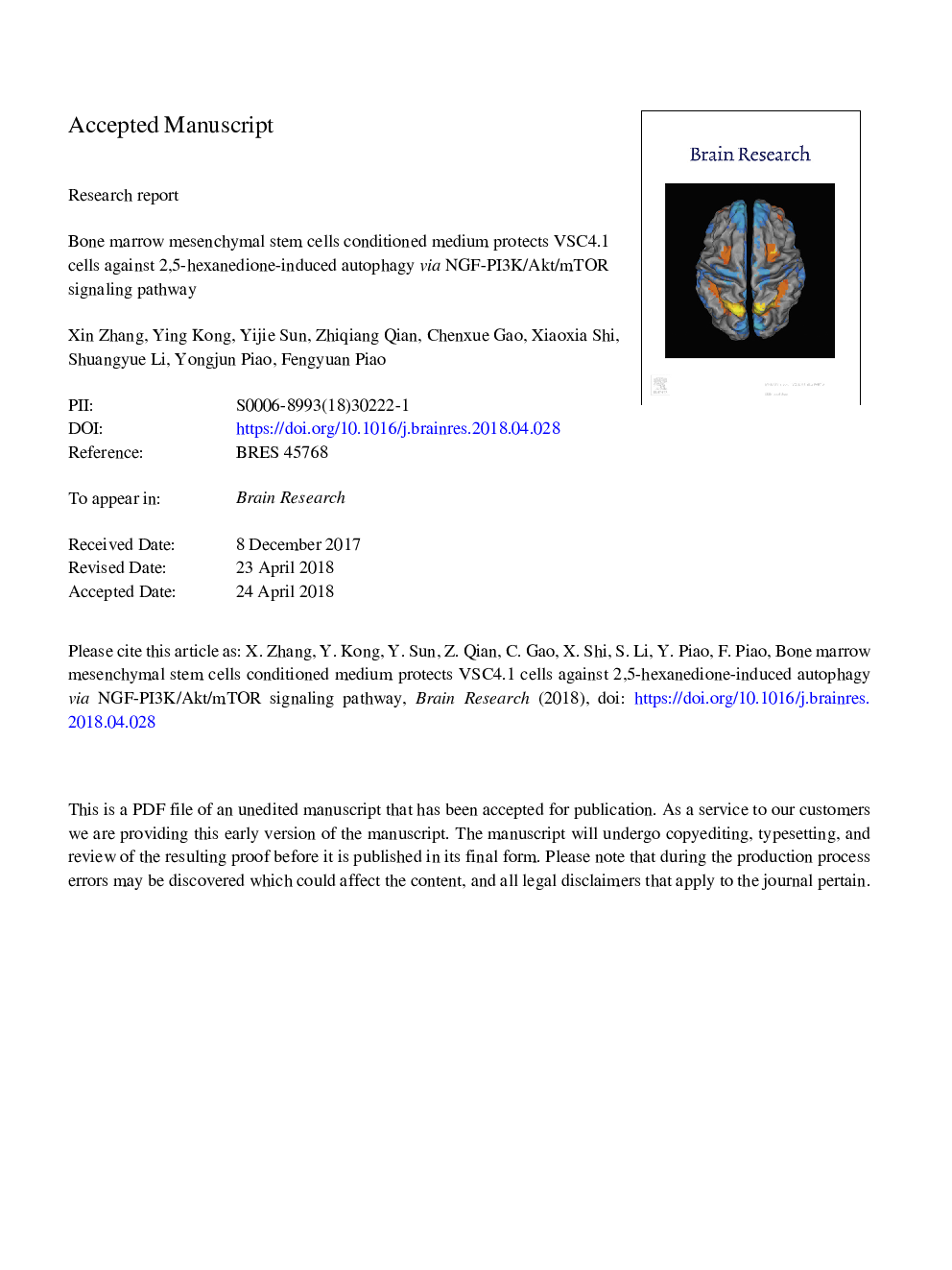| Article ID | Journal | Published Year | Pages | File Type |
|---|---|---|---|---|
| 8839684 | Brain Research | 2018 | 31 Pages |
Abstract
We aimed to investigate the effects of bone marrow mesenchymal stem cell conditioned medium (BMSC-CM) in preventing 2,5-hexanedione (HD)-induced damage to motoneurons, and examined the molecular mechanisms that mediate these effects. VSC4.1 cells were exposed to 25â¯mM HD for 24â¯h followed by incubation with DMEM for 24â¯h. HD-treated cells were incubated with BMSC-CM at varied concentrations. Incubation with BMSC-CM ameliorated the decreased cell viability and reduced LDH release from cells exposed to HD. BMSC-CM suppressed the elevated number of autophagic vacuoles, cells with LC3 puncta, increased LC3-II/LC3-I ratio, and decreased p62 caused by HD exposure. BMSC-CM elevated NGF and p-TrkA expressions in HD-treated cells. Administration of NGF inhibited autophagy, an effect that was similar to that observed after BMSC-CM treatment; this effect was abolished by the addition of NGF-neutralizing antibodies. BMSC-CM or NGF elevated p-protein kinase B (Akt) and p-mammalian target of rapamycin (mTOR) in HD-exposed cells, which was interrupted by TrkA inhibitor, K252a and mTOR inhibitor, rapamycin. BMSC-CM prevented HD-induced autophagic cell damage in VSC4.1 cells. The neuroprotective effect of BMSC-CM appeared to be at least partly associated with its ability to trigger the NGF-phosphatidylinositol-3-kinase (PI3K)/Akt/mTOR signaling pathway.
Keywords
Related Topics
Life Sciences
Neuroscience
Neuroscience (General)
Authors
Xin Zhang, Ying Kong, Yijie Sun, Zhiqiang Qian, Chenxue Gao, Xiaoxia Shi, Shuangyue Li, Yongjun Piao, Fengyuan Piao,
